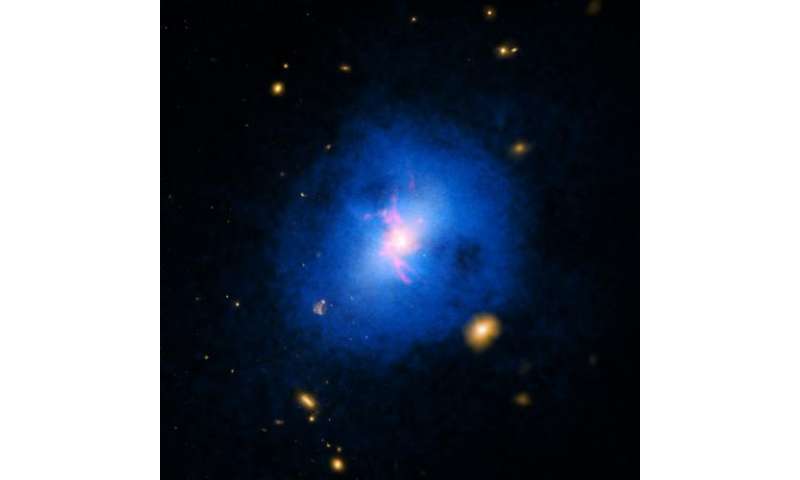Image: NASA's Chandra observatory finds cosmic showers halt galaxy growth

Using NASA's Chandra X-ray Observatory, astronomers have found that the growth of galaxies containing supermassive black holes can be slowed down by a phenomenon referred to as cosmic precipitation.
Cosmic precipitation is not a weather event, as we commonly associate the word—rain, sleet, or snow. Rather, it is a mechanism that allows hot gas to produce showers of cool gas clouds that fall into a galaxy. Researchers have analyzed X-rays from more than 200 galaxy clusters, and believe that this gaseous precipitation is key to understanding how giant black holes affect the growth of galaxies.
"We know that precipitation can slow us down on our way to work," said Mark Voit of Michigan State University (MSU) in East Lansing, lead author of the paper that appears in the latest issue of Nature. "Now we have evidence that it can also slow down star formation in galaxies with huge black holes."
Astronomers have long pursued the quest to understand how supermassive black holes, which can be millions or even billions of times the mass of the sun, affect their host galaxies.
More information:
phys.org/news/2015-03-isnt-universe-bright.html
Provided by Chandra X-ray Center